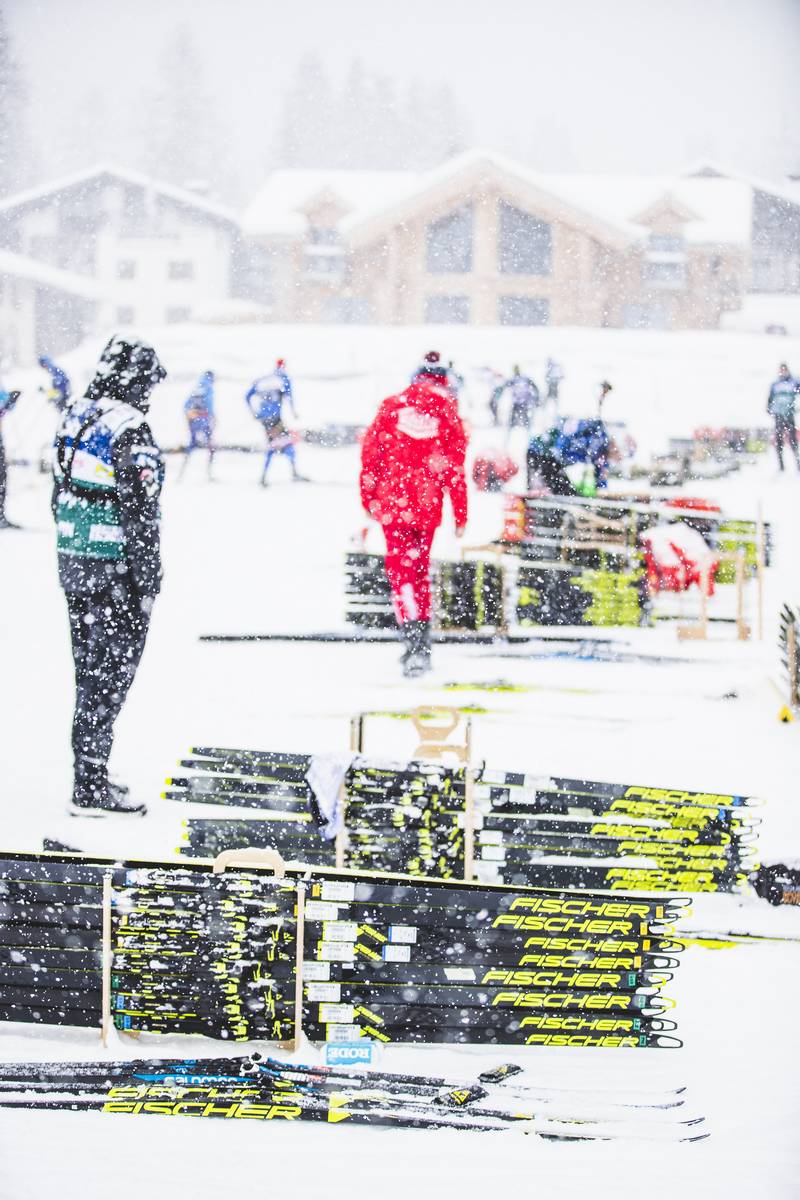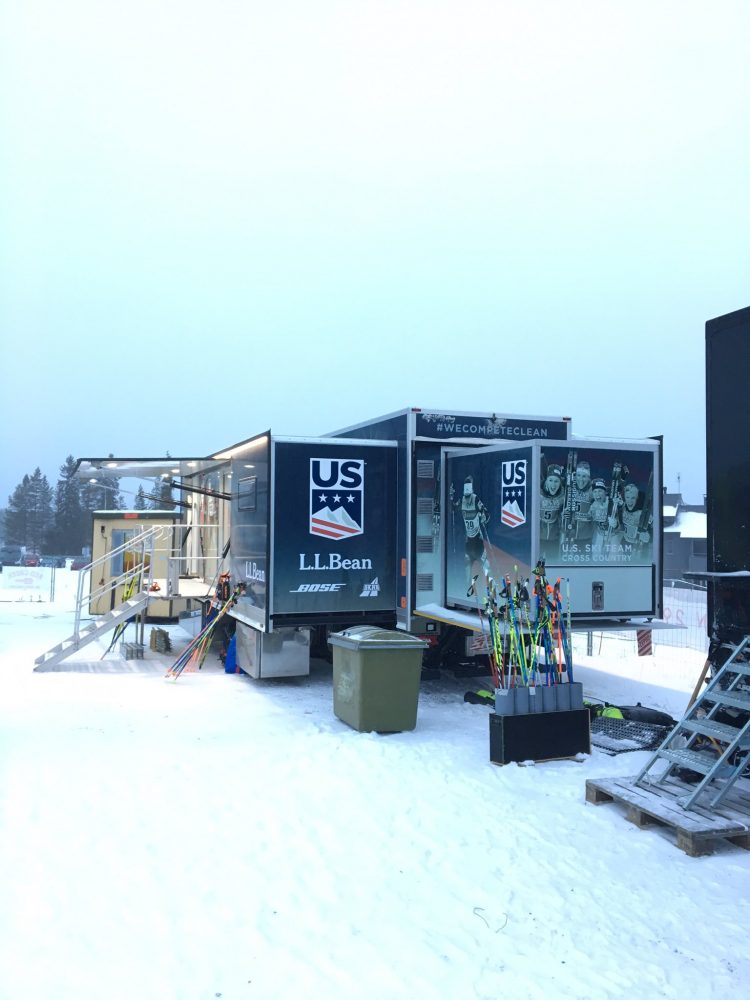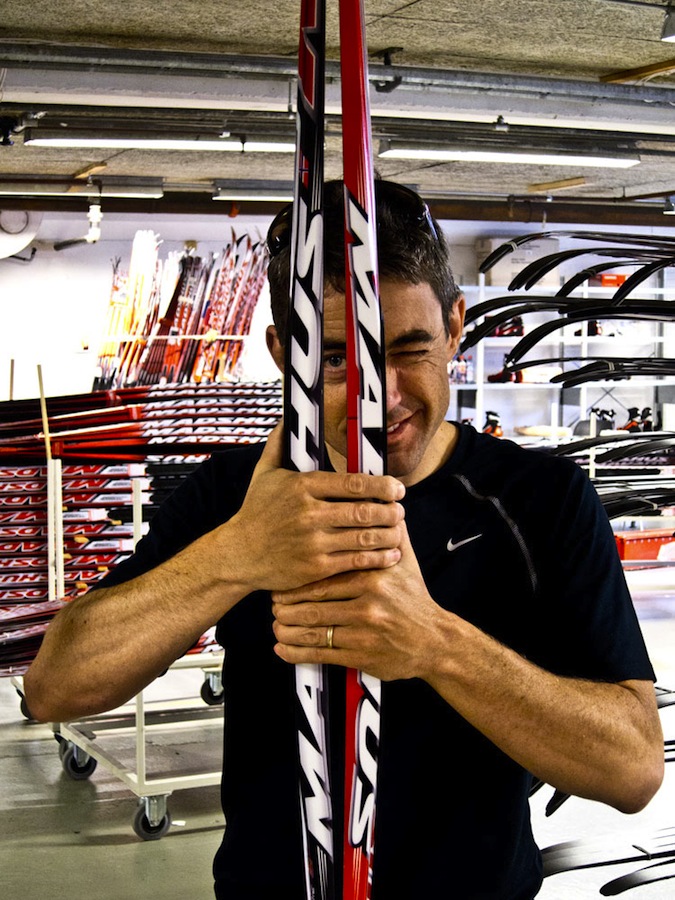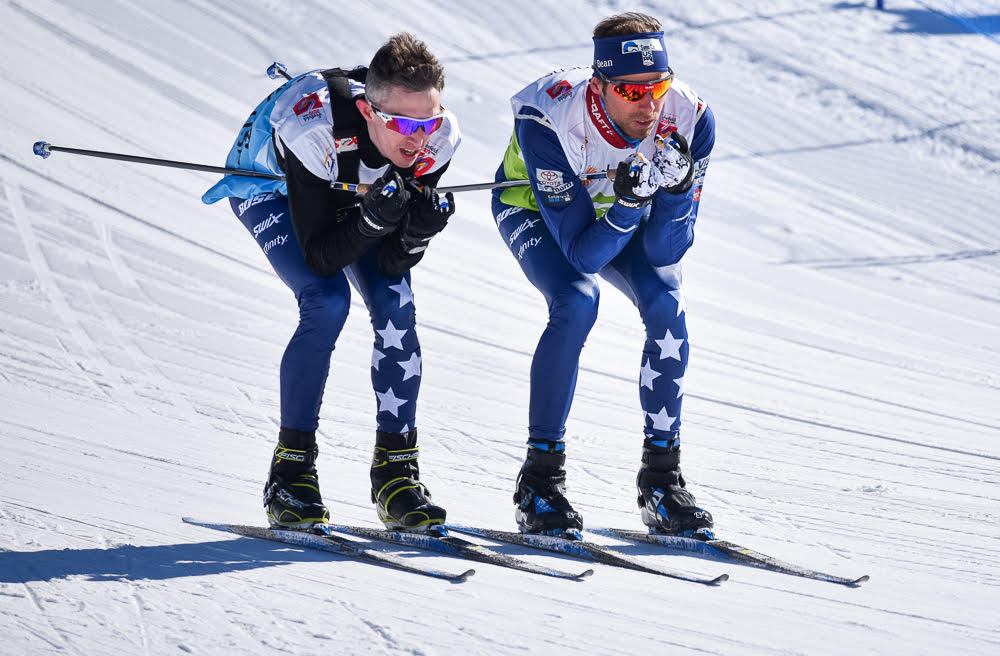
The cost of providing World Cup athletes with competitive skis is mounting at an alarming rate for teams without deep pockets.
This spring, coaches of US National Team athletes and staff from the Center of Excellence in Park City huddled around zoom for their annual meeting, called “Moving USA Skiing Forward.” Among the topics discussed were plans for the US Ski Team to keep pace with what Head Coach Matt Whitcomb calls the “waxing arms race.”
While high end ski service has never been cheap, costs have ballooned, in part due to the growing adoption of on-site grinding programs by well-funded national teams. The desire for teams to have grinding programs is expected to intensify should the fluorocarbon ban take effect in the 2022/23 season.

“A lot of technicians think it’s going to exacerbate some of the problems, because most people view the C8 fluorocarbons as being a great equalizer,” said Cross Country Program Manager Chris Grover. “There’s so many products that are so good… that they end up being quite similar in terms of ski speed.”
Because of the equalizing effect of fluoros, teams looking to gain a competitive edge have increasingly turned to ski selection, grinds, hand structures, and above all, testing. Grover said the challenge was to keep up with nations that can “take brand new skis and put a specific grind on them during the championships, and have the massive manpower needed to do the incredible amount of testing to figure out how every hand structure that they’re testing interacts with every one of the grinds that they’re testing, and doing all that before they even test an athlete’s fleet of skis, or apply those enhanced structures to the ski.”
As a result, Grover said that, “most nations are now spending much more on World Cup ski service than they do on their development budgets, or even their camp budgets.” A 2019 survey by FIS found that big ski nations spent 33% of their annual budget on ski service, compared to 15% for training costs. Dagbladet reported that of the costs teams pay at the World Cup itself, more than half goes towards race service.
When fluoros are phased out, Grover said it would, “put more pressure on the grinding and hand structure side of things, which is a place to spend a lot more money: a lot more R&D money, more testing money, more application and on the ground winter logistical money.”
Grover affirmed that “easily” a third of the US Ski Team budget has already been going toward ski service. He listed expenses such as paying wax techs, including their salary, lodging, and travel, as well as the cost of moving the wax truck around Europe. Add to that ski testing camps and purchasing wax. According to Grover, these costs are “putting immense pressure on all the teams.”

To catch up to the likes of Norway and Sweden, the US Ski Team has made large investments. In 2017 the team purchased a $600,000 wax truck. This season nine nations will haul their own waxing rigs around the World Cup circuit: Sweden, Norway, Finland, Russia, Germany, Switzerland, France, Canada, and the United States.
Where wax trucks were once the cutting edge, grinding is now at the forefront of elite ski service at championship events. “As many as five teams bring grinders to championships,” said Whitcomb. “In a championship that is very wet…[that can] be a huge benefit.”
With the past two World Championships being held in summer-like slush—conditions that allow grinding programs to shine—a US Ski Team grinding program has become more appealing. Currently, most US skiers use factory grinds which vary from company to company. As a result, it can be difficult, especially in very warm conditions, to find a hand structure that works over a variety of grinds.
The advantage to having an in-house grinding program is less venue specific, in the opinion of Zach Caldwell, ski-grinding guru and owner of Caldwell Sport, and has more to do with “overall control of the process.”

Still, Caldwell said in a call with FasterSkier that he believed a team grinding program would be “putting the cart before the horse.” Caldwell outlined the challenges to starting a grinding program: “You can get a very competitive grinder for seventy thousand to a couple of hundred thousand dollars. [The real cost would be] at least one dedicated person who is really going to learn the trade.”
Added to that would be two to four testers to “run skis as often as you can get them out on the snow, around the world, to as many different venues as you can. A good structure needs to work in a lot of different places…this is where the factories come in — they’re testing all the time.”
As it stands, Caldwell said that the US Ski Team has a “very underfunded service department. They don’t have a single 12 month employee…I think there’s so many areas to do super beneficial work by just adding one, maybe two or three full time employees.”
To get a grinding program up and running would require paying “full time employees, every year, and figuring that it’s going to take several years to make any advantages — and that’s only if you have people good enough to be close to the best in the world doing it. It’s just a tough way to make a small advantage,” said Caldwell. “Just adding a championship grinding operation to what they’re already doing doesn’t make sense.”

The US Ski Team has been pursuing other initiatives to bridge the gap to leading wax nations. Gus Kaeding, who runs the analytics department for the US Ski Team, created a system to track weather conditions and skis used at World Cup events.
“Let’s take a place we go every year like Ruka, [Finland],” said Kaeding. “ [Previously] we just had the weather written down in notebooks somewhere. Now, every morning when the coaches arrive, they are able to attribute what skis they’re using to their athlete, all in a centralized system. We can look and see which skis performed and which didn’t, and what the weather conditions were.”
Kaeding felt that the old school method of logging conditions, waxes, and skis in notebooks was a “competitive disadvantage.” He pointed to the weather tracking system that Norway developed beginning in 2009, complete with their own weather stations at World Cup venues.
“They can tell you the weather conditions in Ruka from the last decade and a half and what happened down to the millisecond each day,” Kaeding said, adding, “They’re a decade ahead of us. In terms of information, there’s basically no way we can catch up to that, which is a bit frustrating.”
Nevertheless, Kaeding is optimistic that a couple of developments may help the team in the future. One is that a future fluoro ban may make much of other teams’ waxing databases less relevant. The second is the Beijing Olympic venue, which, apart from the Chinese ski team, has not been accessible to any of the teams.
This lack of access to the Chinese venue has hampered plans by Norway to conduct research and testing in advance. Normally, the Norwegian Gliding Project—a partnership between the Norwegian cross country, combined, and biathlon teams—conducts ski testing at an Olympic venue beginning four years in advance. In the lead up to the 2018 Games, the project spent 14.7 million NOK, equivalent to about $1.7 million USD. With the Beijing Olympic venue closed, the level of research a nation like Norway can have in its back pocket is severely limited.
“Frankly, when we go to a place, such as the Beijing Olympics — a venue no one’s ever been to — it gives us an advantage,” Kaeding said. “Because they don’t have 10 years of data on this place… It brings everyone to a more level playing field.”
Kaeding is among those who believe that a FIS ruling on limitations is the path to a fairer sport. “All the teams are dedicating such a high portion of our budgets just to improve the last 1% [of ski speed],” said Kaeding. “Which is a little ridiculous… I’m almost of the mind that we need to push harder on FIS to put something in place, and put more energy into doing that, because it’s going to benefit us if we can get on a more level playing field, and a lot of the other countries as well. Creating a more equal playing field should only help the overall health of the sport.”

Whitcomb explained that the US Ski Team is “supporting measures by FIS to try and cut back on this to make it more affordable.” Over the years, many ideas to equalize the sport have been floated, and a few have been implemented with little effect.
“The takeaway,” said Grover, “is that there’s been all kinds of workarounds, and the bigger nations have actually figured out a way to continue to do what they’re doing.”
In 2015, FIS attempted to limit the size of service teams by capping the number of technicians a nation could bring to an event at 22. Norway found a workaround by partnering with Great Britain and thereby increasing their quota to 35. That has been a boon for British skiers, while increasing pressure on smaller nations to find a patron state. Ireland now partners with Sweden, and Australia has partnered with the U.S.
Caldwell felt that quotas on race technicians wouldn’t get to the heart of the issue, saying, “the resources that big teams bring to bear are often offsite and in the background. So just limiting on site accreditations doesn’t level the playing field. As long as Norway can show up and take 200 pairs of skis from the factory to test for [Therese Johaug] and take just six and send them to the World Cup for further testing—good luck.”
In 2019 measures were introduced to FIS to prevent teams from traveling with grinding machines or testing at championship venues years in advance. As of yet, the measures have not been passed.
Grover has a seat on the FIS working group within the Cross Country Committee that will discuss ideas for rule changes. He wrote FasterSkier that “currently there are no formal proposals in front of the FIS Cross Country Committee for this season. The working group is discussing possible measures for debate and implementation in the Spring of 2022.”
Among the measures he said the group will discuss are: “banning grinders from venues, limiting cooperation between nations, limiting the size of service teams (i.e. staff reductions), limiting access to testing tracks/race courses, [and] homogenized waxing by neutral parties.”

Ebba Andersson tests her Fischer fleet. (Photo: Nordic Focus)
“The challenge,” Grover wrote, “is that no measure alone is comprehensive and there are always workarounds. It will be interesting to see where the discussion goes and if there are any meaningful steps we can take as a community.”
Caldwell believes that if the goal of measures is to limit spending, they should target that issue head on. “You have to find an economic instrument to limit the costs, like a budget cap,” he said. “I don’t know how you regulate it, but you have to start there.” He added that: “The Norwegians are out there with a basically unlimited budget just looking for creative ways that add value that they can spend their money on. They’re setting a bar that’s difficult for smaller teams. They just are.”
These issues are not contained to the World Cup. The fluoro free future, already in place in different regions and circuits, is changing the priorities of teams and clubs domestically. Caldwell believes that when teams are no longer focused on fluoros they will, “make room in their schedule and budget to focus on other things.”
The cost of these new priorities — ski selection, grinding, hand structure, and the intensive testing that comes with each — will easily make up, and likely increase, the cost of competitive ski service domestically. Caldwell pointed to the fluoro free (EISA) collegiate circuit, saying, “College budgets aren’t changing — they’re going to spend the money.”
“It always comes down to resources,” said Caldwell. “To be competitive you’re going to spend what you can spend.”
For more debate on this topic, listen to this episode of the Devon Kershaw show.
Pasha Kahn
Pasha Kahn writes and coaches in Duluth, Minnesota.



